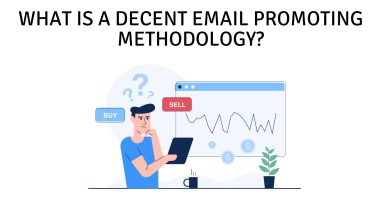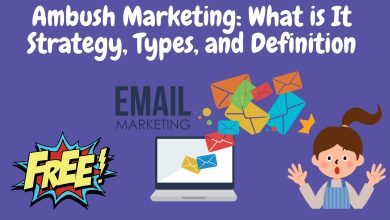4 ways to know spam and unwanted email
Email has become such an integral part of everyday business that it is now a serious problem. From spam emails to phishing emails, many companies struggle to distinguish which emails are legitimate and which are not. This article will help you identify spam in your business to keep your inbox clean and secure!

What is spam?
Spam is unsolicited email messages that are sent without the recipient’s consent. This type of email can be harmful to your business because it can contaminate your inbox with messages that are not related to your business.
Spam can also take up valuable time that you might spend on more productive tasks. Additionally, spam emails can contain viruses or other malware that can harm your computer. If you suspect that you are receiving spam emails, you can do a few things to stop it.
First, you can unsubscribe from any mailing lists from which you no longer wish to receive messages.
Second, you can mark spam messages as junk so that your email program will filter these messages in the future.
Finally, you can report the spam emails to the sender’s ISP so that they can take action to stop them. If you are getting spam emails, there are a few things you can do to stop it.
Examples of spam detection

There is no one-size-fits-all answer to this question, because the best way to identify spam in your business will vary based on the size and scope of the process and the types of email addresses you receive. However, some tips on how to identify spam in your business include:
1. Check the sender address: A common sign that an email is spam is if the sender address is invalid or legitimate. For example, an email from a company you’ve never heard of might use an invalid address like “[email protected]” instead of a valid address like “[email protected]”.
2. Check for spelling errors and misspellings: Another sign that an email is spam is if it contains typos or incorrect spelling. For example, an email from a company that says “Order Now!” Spam messages may be sent with “Ordner now!”
3. Email Content Check: Spam emails often contain promotional or advertising content that is not relevant to your business, or contain links to malicious websites. For example, an email promoting a discount on products you don’t sell might include a link to a website that contains malware.
Types of spam detection

Spam emails can come in different shapes and sizes, but they all have one goal in common: to get you to click on a link. Here are four types of spam you may encounter in your business:
1. Phishing scams try to steal your personal information by persuading you to enter it into a fake website.
2. A commercial spam is an email that is sent for the sole purpose of promoting a product or service.
3. Viral spam spreads through social media and email lists like wildfire.
4. Junk email is any email that most users do not consider spam. Junk email can contain viruses, malware, and other harmful content, so be sure to avoid it if you can!
If you believe you have received an inappropriate or suspicious email, feel free to contact the IT team or the vendor responsible for your email server for investigation. With these tips, you can help keep your business safe from spam!
How to identify spam?

[box type=”note” align=”” class=”” width=””]Spam is a scourge of the internet and can be a real headache for businesses. Not only is receiving unwanted emails annoying, but it can also be harmful if it gets caught in the spam filter. Here are five ways to identify and stop spam from harming your business:[/box]
1. Check the sender’s address: Most of the spam emails come from fake addresses, so check the sender’s address. If the address isn’t known, or if the address looks suspicious, it’s probably spam. Spam emails often contain strange or unprofessional-looking sender addresses. If you do not recognize the address, it is better to delete the email. You can also try searching for the address on Google to see if it has been linked to spam in the past.
2. Check the subject line: The subject line is critical in identifying spam because most spammers try to lure recipients with attractive titles or subject lines that are relevant to their interests but not related to the content of the email. Look for common spam phrases, such as “free trial” or “buy now.” If you see someone you don’t know, don’t open the email!
3. Beware of Promotional Content: If something sounds too good to be true, it probably is! Many of the spam emails contain promotional content such as free samples or discounts that are too good to be true. Oftentimes, these emails come from a scam address that tries to trick you into providing personal information. Whenever you come across an email like this, be sure to check the sender carefully. If you are unsure of the sender, do not click on any links in the email or open any attachments.
4. Be wary of unsolicited offers: Unsolicited offers (such as those sent via email or social media) can be tempting, but it is important to remember that if something sounds too good to be true, it probably is. like that. Be especially careful with offers that require you to pay an upfront fee or provide personal information such as your Social Security number or bank account information. If you receive an unsolicited offer that you are not sure of, do some research before offering any money or information. You can also contact the company directly to inquire about the offer.
Best spam detection tools
Spam detection tools are essential for any business that relies on email communications for customer service, marketing, or even plain old communication. There are a variety of different tools available, and each has its own set of features and benefits. It can be difficult to decide which tool is best for your specific needs, so we’ve compiled a list of the most popular spam detection tools to help you get started.
1. SpamAssassin is one of the most popular spam detection tools available. It has a wide range of features, including the ability to filter viruses and other malicious content and spam. SpamAssassin is very effective in detecting and filtering spam emails, but it is not perfect. There are several ways that spammers can bypass filters, including using images instead of text or using misleading headers. However, SpamAssassin is constantly updated to try to stay on top of the latest scams that spammers use.
2. MailScanner is another popular spam detection tool. It has a user friendly interface and can detect viruses and spam emails. MailScanner uses several techniques to detect spam emails, including pattern matching, heuristic analysis, and Bayesian filtering. It is also able to see phishing emails designed to trick users into revealing personal information such as passwords or credit card numbers.
3. SpamCop is the third most popular spam detection tool. It has a wide range of features, including the ability to automatically scan your inbox for suspected spam messages and prevent them from being delivered to your inbox. It also includes a whitelist feature that lets you specify which email addresses should always be allowed to pass through, even if they’re on a known spam list. And if you ever receive a spam message, you can quickly report it to SpamCop with just a few clicks.
4. JunkMailExpert is the fourth most popular spam detection tool . It has a simple interface and can spot junk emails before they reach your inboxes. JunkMailExpert is very easy to use. All you have to do is drag and drop emails into its interface, and it will automatically start scanning for junk email. Once JunkMailExpert has finished viewing your emails, it will give you a report detailing the number of spam emails found and give you some options to deal with.





















